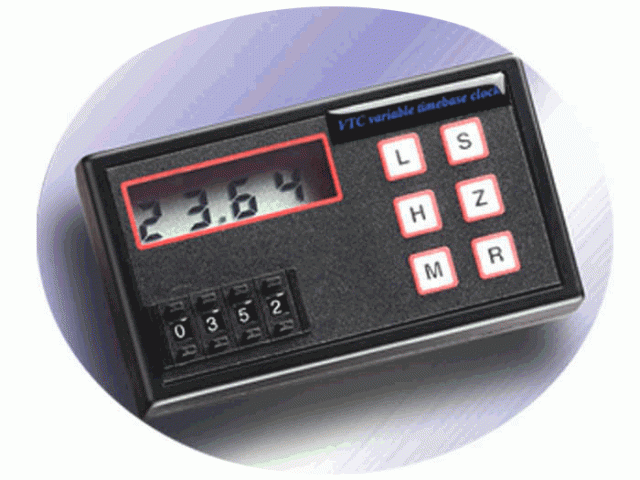IR197 AV SPEED CALCULATOR

Item Description
IR197 AV SPEED CALCULATOR
Historic Regularity Events? Average Speed? After been banned for several years now allowed in most rally's
This Speedtable (VERSION A5 manual) allows competitors to quickly program any speed to one decimal pace. Keeping the cars tripmeter matched to the speedtable figure creates very accurate average speed attainment. The unit is battery operated, has backlighting, beeps at each increment if you wish it, and needs no connection to the car.
Specifications: 4 digit large LCD readout. 4 mechanical push-switches to calibrate to any speed 0.1kph to 999.9 mph (either mph or kph). Solid state backlighting. Audible beep on or off. Speed to one decimal place. Small (10cm long) pocket size case. PP3 (9 volt) alkaline battery operated. A quality battery lasts for several days continuous use. Remove it if the unit is not to be used for long periods. Use of the beeper and backlights reduces battery life. The battery condition is indicated by the brightness of the backlights. Set the rotary switches to the required average speed to one decimal place (ie 0352 = 35.2 mph or kph). These switches permanently reassure that the speed is correctly programmed. The Z membrane switch zeros the readout and enters the set speed into the calculation. If you keep the vehicle at the speed which matches the tripmeter to the speedtable then the average speed desired will have been achieved. If the tripmeter is lower than the speedtable then increase the speed of the vehicle. If the tripmeter is higher than the speedtable then slow down the vehicle until the figures match. The R button enters the desired average speed from the rotary switches without zeroing the readout. This enables speed changes to be achieved without zeroing the tripmeter; pre-enter the new speed onto the rotary switches, and press R at the point where the new speed starts. The new speed calculations will commence from that point. NEW BELMOG FUNCTION: If, after reaching the next control, the timing Marshal advises that a new average speed should be used RETROSPECTIVELY (ie from the previous control) then enter the new average on the rotary switches and momentarily press the M button. A new target tripmeter reading will appear on the readout.
Special settings: The machine is of course only a timer. Used on setting 0360 it simply counts seconds. Used on setting 3600 it counts seconds to one decimal place. Used on 0006 it counts minutes. Used on 0600 it counts minutes to 2 decimal places. Used on 0001 it counts hours to one decimal place. Used on setting 0010 it counts hours to 2 decimal places.
The Marshalling Clock (available in version A5 only) mode is available by holding the H (Hours) button pressed whilst switching the clock ON by the power switch in the rear battery compartment. It features hours, minutes, seconds and hundredths of a second, spread over two uses of a large format four digit LCD screen. The primary function of a marshalling clock is to hold the time of day for logging purposes when a competitor completes a stage of a competition, then restore the current time of day to the readouts following the noting of the competitor's time. A bonus feature is that this clock holds a memory of the previous frozen time, just in case the screen freeze is released accidentally before the time is fully noted or agreed. A good quality alkaline PP3 battery lasts about a week, but use of the night lights will reduce this life. A lithium type battery is expensive, but can last even longer.
Instructions: Fit the battery in the compartment at the rear of the case observing the correct polarity by proper use of the polarised connector switch may be fitted in this compartment to switch off the clock. When first powered up in the marshalling clock mode, the message 'not / SEt' will flash on the screens. Hold down the H button and whilst the H button is being held press the M button. Release the M button. Release the H button. The clock is in the hours/minutes screen as evidenced by the existence of the centre colon (double dot). The flashing pair of digits can be incremented by multiple presses of the S button, or can be zeroed by the Z button. Pressing the H button will select either the hours digits flashing (24 hour format only) or the minutes digits. In the 'setting' mode, or indeed any mode, the R button will swap screens so that the four digits showing are either the hours and minutes (with colon lit) or seconds and hundredths of a second (with just one decimal point lit). Whilst still in the setting mode with seconds / hundredths showing we can either zero the seconds with the Z button as the full minute comes, or increment full seconds with the S button. When the time has been fully set, press the H button first, then whilst holding the H button press the R button. This will quit the time setting mode, but it is important to note that there is a reliability feature which prevents the clock from inadvertently being altered in the field. Once the 'time setting' mode has been exited, it cannot be re-entered unless the whole clock is powered down for a few seconds by either disconnecting the battery, or switching the power on/off switch to the off position if this is fitted.
